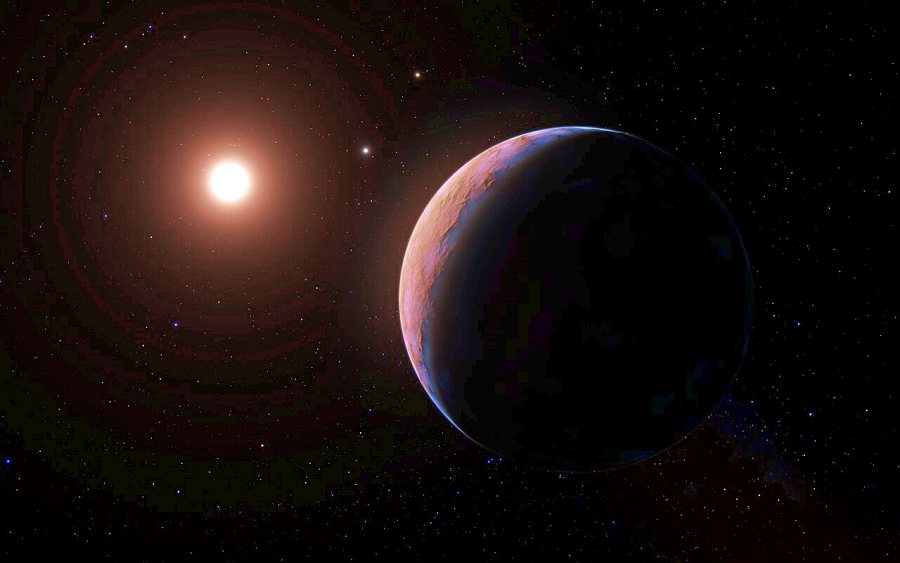![]() This handout image released by The European Southern Observatory (ESO) on February 10, 2022 shows an artist’s impression of Proxima d, a planet recently discovered orbiting the red dwarf star Proxima Centauri, the closest star to the Solar System. _____________________________________________________________________________________________________________
This handout image released by The European Southern Observatory (ESO) on February 10, 2022 shows an artist’s impression of Proxima d, a planet recently discovered orbiting the red dwarf star Proxima Centauri, the closest star to the Solar System. _____________________________________________________________________________________________________________
Fri 11 February 2022:
Just four lightyears distant, there could be a new planet in our solar system’s neighborhood. At a distance of 25 trillion miles, a third planet has been discovered orbiting Proxima Centauri, our sun’s nearest star neighbor (40.2 trillion kilometres).
The red dwarf is only one-eighth the mass of the sun, but it already possesses an Earth-sized planet. A second, distant planet is also possible.
Proxima d, the most recently discovered planet, completes one circle around the star every five Earth days.
It is one of the lightest exoplanets ever discovered, with a mass of about a quarter of the Earth’s. The discovery was described in a study published in Astronomy & Astrophysics.
This planet is only 2.5 million miles (4 million kilometres) from the star, which is less than one-tenth as far as Mercury is from the sun in our solar system. The closest planet to the sun, Mercury orbits it every 88 days.
Proxima b, the first planet discovered in the system, was confirmed in 2020. It orbits the star every 11 days and is about the size of Earth. It is located within the habitable zone, or the distance from a star at which liquid water, the key ingredient for life, can exist on the planet’s surface.
Another planet Proxima c is too far from the star to be in a habitable zone, and the newly discovered Proxima d is too nearby to be in the habitable zone.
João Faria, a researcher at Portugal’s Institute of Astrophysics and Space Sciences and the lead study author, says the finding indicates that our nearest stellar neighbour contains a wide variety of interesting new worlds that could be explored in the future.
Proxima d was discovered using the Very Large Telescope (VLT) of the European Southern Observatory in Chile. Astronomers used the observatory’s telescopes and instruments to find and confirm past discoveries of planets in the Proxima Centauri system.
Scientists recently observed a weak signal from a fast orbiting object close to the star during follow-up observations.
ESPRESSO, or the highly sensitive Echelle Spectrograph for Rocky Exoplanets and Stable Spectroscopic Observations instrument on the VLT, was used to conduct more observations.
The data suggested there was a planet present, and that its gravitational pull was tugging on the star.
According to Faria, they were able to validate the signal as a new planet candidate after acquiring further observations. Detecting such a small signal was a fascinating challenge for him, and discovering an exoplanet so near to Earth added to the excitement.
Future investigations of Proxima d could establish that it is, in fact, the third planet seen around this star. Future investigations, according to the researchers, may reveal even more facts about the system, or possibly new planets.
NEWS AGENCIES
_____________________________________________________________________________________________________________
FOLLOW INDEPENDENT PRESS:
TWITTER (CLICK HERE)
https://twitter.com/IpIndependent
FACEBOOK (CLICK HERE)
https://web.facebook.com/ipindependent
Think your friends would be interested? Share this story!





